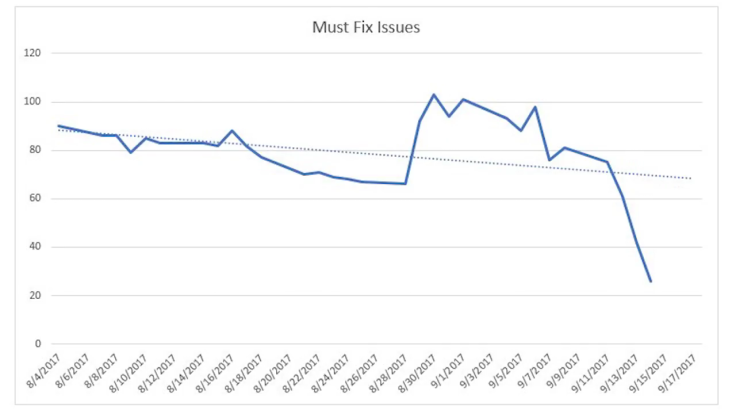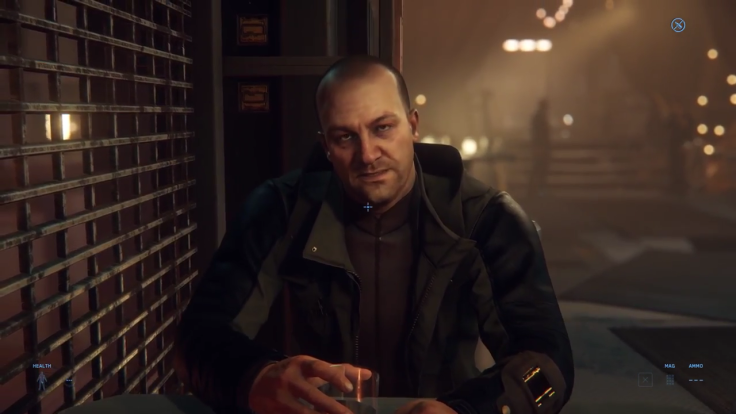Star Citizen ’s developers at Cloud Imperium Games have posted a new Around The Verse, and this week’s show covers 3.0 Evocati progress and the game’s complex mission system. It taught us how subsumption technology will help bring our space sim fantasies to life.
Before getting to that, though, let’s first update you on the latest news about 3.0. In a major improvement, the latest build contains just 26 must-fix issues down from last week’s 76. Once those two dozen kinks are worked out, an Evocati version will be dispatched to a small group of backers. The Evocati build doesn’t seem like it will have the full 3.0 feature suite in place, though. Instead, much of its initial focus will be on planetary traversal.
Before the Evocati arrives, however, there are quite a few serious issues that need patching. For one, it’s been difficult for programmers to pinpoint correct travel times when using hyperdrive. Because of this, shorter travel distances are either finished too quickly or take too long. Even more troubling, stray code from last month’s Gamescom demo has caused a bug that makes ships explode when they come in contact with players. Both issues are expected to be addressed for Evocati.
Thankfully, if your Star Citizen game does crash while playing 3.0, the team is currently hard at work on a new graceful-versus-ungraceful disconnect parameter. Once it's in place, players will be able to return to their exact previous location in the event of an unexpected disconnect.

This week’s focus was the game’s mission systemactive in 3.0 and beyond. Whether totally scripted or procedural, its main driving force is a system called subsumption. In simple terms, it’s a modular foundation through which all of Star Citizen’s AI operates. NPCs may use certain objects, function on specific timers or react in specific ways, and this is all driven by subsumption.
When designing missions in particular, then, there are countless variables that must be considered simultaneously to make sure each event feels real. For example, the code must be in place to ensure that more pirates spawn in less wealthy sections of the map. Each ship the player encounters must also have characters automatically performing the appropriate jobs as well.
Here’s what Persistent Universe Game Director Tony Zurovec had to say on the subject:
This is just the tip of the iceberg. There are many systems upon which subsumption depends that had to reach a certain level of functionality before the system could really start to flicker to life. That's actually why getting subsumption into 3.0 was such a big deal. It means that a lot of other critical game systems are now either starting to come online or have reached a certain level of refinement, which is why I expect gameplay to start making considerably larger leaps forward in the future than it has in the past.
The centerpiece to all of this is an in-depth tool system that lets designers select how these variables work. With special programs, it’s possible to see massive strings of code while running through full dialogue trees (if they exist.) Once these tools were made, every existing mission had to be completely redone to fit the subsumption framework.
Now that the transition’s been made, missions in Star Citizen are divided into two basic categories: story missions and generated missions within the PU. The latter are governed by a Mission Breaker system that analyzes player data to determine which interactions are available. For example, the characters players have come in contact with, and their standing with those characters, will determine what shows up on their MobiGlass interface. In fact, relationships even dictate the vocal enthusiasm with which missions are offered.
Generally the less scripted encounters may not come with a specific objective and they can be accepted, denied or approached in limitless ways. In short, it’s a method of allowing players to create their own story in the universe. Just like the real world there will be departures from what’s normal, and these departures help tell a story.
Despite covering only two basic umbrellas, the larger vision for the subsumption mission system is that it can be arranged in limitless ways. Perhaps CIG Designer Luke Pressley describes it best:
“I'm not going to say you'll never play the same mission twice, not in 3.0 anyway, but the moment you have this full galaxy and we've gone in and marked up all these places for it to be and enemies and such, it's very unlikely you'll ever get the same mission twice,” he said in the clip.
Star Citizen is in alpha for Kickstarter backers on PC.
What do you think of the latest 3.0 progress report? Will Star Citizen’s mission system truly deliver on its promises? Tell us in the comments section!


















